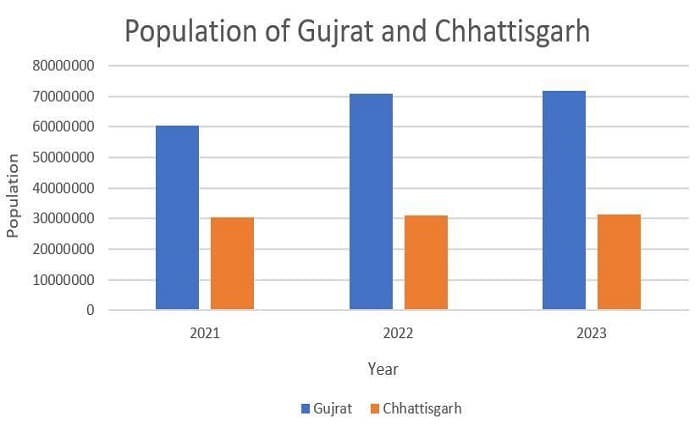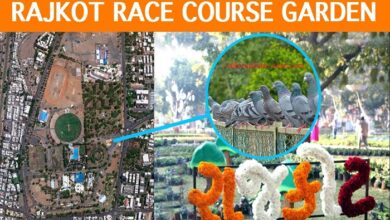Rajkot Population 2023: A Comprehensive Analysis

Introduction
Rajkot, a major city in the Indian state of Gujarat, has seen significant growth and development over the years. Understanding the population dynamics of Rajkot in 2023 provides insights into the city’s economic, social, and infrastructural development. This comprehensive analysis delves into various aspects of Rajkot’s population, exploring its current status, trends, and future projections.
Historical Population Growth in Rajkot
The historical population growth of Rajkot sets the stage for understanding its current demographics. Over the decades, Rajkot has experienced steady growth, driven by its economic opportunities and cultural significance. By examining past census data, we can identify patterns and factors that have contributed to the city’s expansion.
Current Population of Rajkot in 2023
As of 2023, Rajkot’s population has reached significant numbers, reflecting its status as a thriving urban center. This section provides detailed statistics on the current population of Rajkot, including total population, gender distribution, and age demographics. These figures highlight the city’s growth trajectory and demographic composition.
Population Density and Urban Spread
Population density is a critical factor in urban planning and infrastructure development. Rajkot’s population density in 2023 offers insights into the city’s spatial distribution and urban spread. This section explores how population density varies across different parts of the city and its implications for housing, transportation, and public services.
Migration Patterns and Their Impact
Migration has played a vital role in shaping Rajkot’s population. The city attracts people from various parts of India due to its economic opportunities and quality of life. Analyzing migration patterns helps in understanding the diversity and cultural dynamics of Rajkot’s population in 2023.
Birth and Death Rates in Rajkot
The natural population growth in Rajkot is influenced by birth and death rates. This section examines the current birth and death rates in Rajkot, providing insights into the city’s demographic changes. Understanding these rates is crucial for planning healthcare, education, and other public services.
Age Demographics of Rajkot
Age demographics provide a detailed picture of Rajkot’s population structure. This section breaks down the population into different age groups, highlighting the proportion of children, working-age adults, and senior citizens. Such information is vital for designing policies and services catering to various age groups.
Gender Ratio in Rajkot
The gender ratio in Rajkot is an important demographic indicator. This section analyzes the male-to-female ratio in the city’s population, exploring any disparities and their potential causes. Understanding the gender ratio helps in addressing social and economic challenges specific to different gender groups.
Literacy Rates and Educational Attainment
Education is a key factor in the development of any city. Rajkot’s literacy rates and levels of educational attainment in 2023 provide insights into the city’s human capital. This section explores the educational profile of Rajkot’s population, highlighting achievements and areas needing improvement.
Economic Impact of Population Growth
Population growth has direct implications for Rajkot’s economy. This section examines how the increasing population influences economic activities, employment opportunities, and income levels. Understanding these economic impacts is crucial for sustainable urban planning and economic development.
Infrastructure and Public Services
The population growth in Rajkot demands robust infrastructure and public services. This section assesses the current state of infrastructure, including transportation, healthcare, and housing, in response to the city’s population needs. It also discusses the challenges and opportunities in expanding these services.
Future Population Projections
Projecting future population growth is essential for long-term planning. This section provides population projections for Rajkot, based on current trends and data. These projections help in anticipating future needs and preparing for sustainable urban development.
Socio-Cultural Implications of Population Trends
The socio-cultural landscape of Rajkot is influenced by its population dynamics. This section explores how population trends affect the city’s cultural diversity, social cohesion, and community life. Understanding these implications is important for fostering a harmonious and inclusive urban environment.
Conclusion
Rajkot’s population in 2023 reflects the city’s dynamic growth and development. By analyzing various demographic factors, we gain a comprehensive understanding of the city’s current status and future potential. Sustainable planning and inclusive policies are essential to harness the benefits of Rajkot’s population growth while addressing its challenges.
FAQs
1. What is the current population of Rajkot in 2023?
As of 2023, the population of Rajkot is estimated to be approximately [insert specific number based on latest data]. This figure reflects the city’s continuous growth and development.
2. How has Rajkot’s population grown over the past decade?
Over the past decade, Rajkot has experienced steady population growth due to economic opportunities and improved quality of life. Historical data shows consistent increases in population numbers.
3. What are the main factors driving migration to Rajkot?
The main factors driving migration to Rajkot include job opportunities, educational institutions, and better living conditions. The city’s vibrant economy and cultural attractions also play significant roles.
4. What is the gender ratio in Rajkot’s population?
The gender ratio in Rajkot’s population in 2023 is [insert specific ratio], indicating the balance between the number of males and females in the city. This ratio is crucial for understanding the social dynamics of Rajkot.
5. How does Rajkot’s population density affect urban planning?
Rajkot’s population density affects urban planning by influencing the allocation of resources, infrastructure development, and public services. High population density areas require more efficient and sustainable planning solutions.





